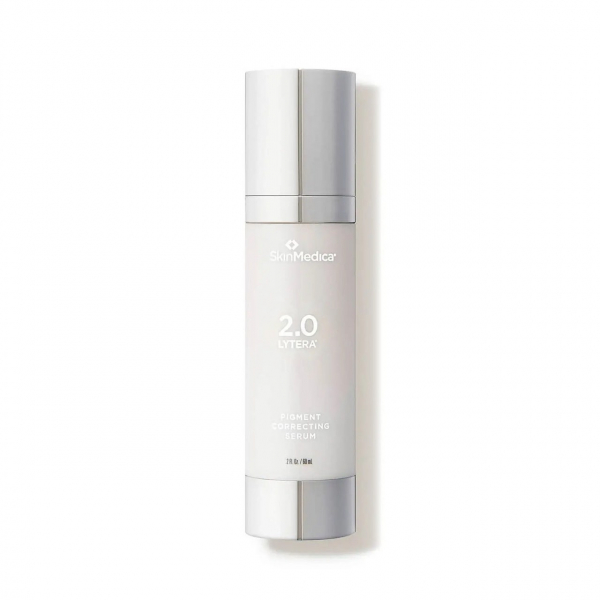 Portrait of young beautiful woman with natural make-up wearing white lace corset looks fresh and lovely Perfect glowing skin Fashion model studio portrait on white backgroundGetty Images
Portrait of young beautiful woman with natural make-up wearing white lace corset looks fresh and lovely Perfect glowing skin Fashion model studio portrait on white backgroundGetty Images
All products featured on Allure are independently selected by our editors. However, when you buy something through our retail links, we may earn an affiliate commission.
Hyperpigmentation and melasma are two of the most common skin concerns — and closely related ones at that. Although there are ways to address discoloration without visiting a dermatologist or getting a prescription, it's derms who have the most valuable information to offer when it comes to achieving a more even skin tone. And in Allure's latest Skinfluencer videos, New York City-based board-certified dermatologist Shereene Idriss, MD, drops some serious knowledge.
In the first video, Dr. Idriss breaks down the basic differences between hyperpigmentation and melasma. "Hyperpigmentation presents as tiny, little darker spots — variations of your skin tone that can make you look overall ruddy," she explains. "All skin types can deal with hyperpigmentation, but unfortunately, it's the ones with more olive undertones who are a little bit darker in which hyperpigmentation tends to linger a little bit longer."
Melasma, on the other hand, is an actual skin condition. "It's a diagnosis that we don't really fully understand, but you have irregularly shaped plaques that appear, which are often triggered by sun, heat, stress, hormones, pregnancy, period — you name it." She suggests throwing a "kitchen sink" full of ingredients at melasma, like retinoids, licorice root, and much more.
Dr. Idriss's experience with melasma isn't just from a professional standpoint. "I know you might be thinking, What the heck does she know? Her skin looks pretty even. But baby, this has taken some work," she says in the second video. After giving birth to her son, melasma seemed to flare up out of nowhere, so she put together a routine to address it, including glycolic acid, vitamin C, tranexamic acid, and alpha-arbutin.

Courtesy of brand
L'Oréal Paris Revitalift Derm Intensives 10% Pure Glycolic Acid Serum

Courtesy of brand
SkinCeuticals Phloretin CF

Courtesy of brand
SkinMedica Lytera 2.0 Pigment Correcting Serum

Courtesy of brand
The Inkey List Alpha Arbutin
But she didn't stop there. "I prescribed myself hydroquinone and tretinoin, which I would use every night. But all of this would've been useless if I had not bathed myself every single day in SPF, several times a day," she adds, emphasizing the importance of sunscreen in controlling discoloration.
There are also in-office treatments for hyperpigmentation, which Dr. Idriss discussed in the third video. "When treating hyperpigmentation, whether it is sun spots, age spots, or unwanted freckles, because we've just fallen out of love with our freckles, we can either field treat the area, meaning we treat the whole area, or we can spot treat," she says, showing an example of what spot-treating with the Alex TriVantage laser would look like. "This laser has the unique ability to actually target the pigmentation within the lesion without affecting surrounding tissue."
What kind of results can you expect? You'll have to watch the video to find out. In fact, why not watch all three?